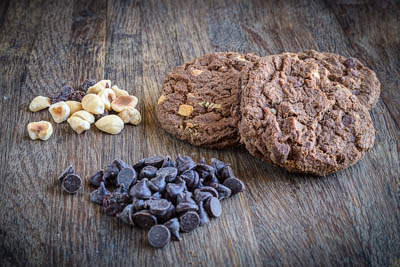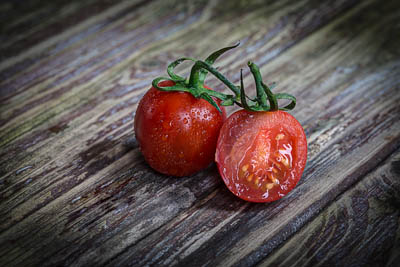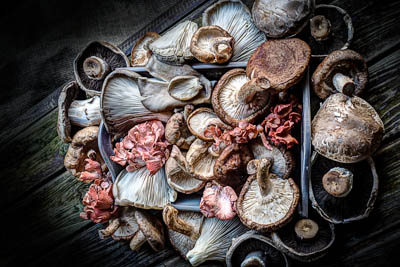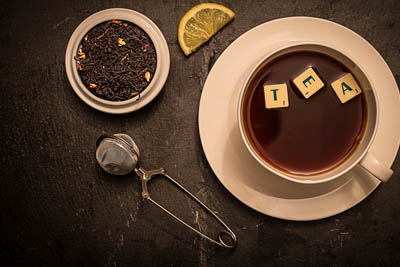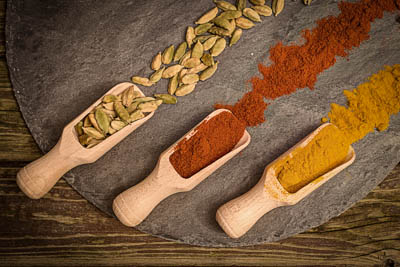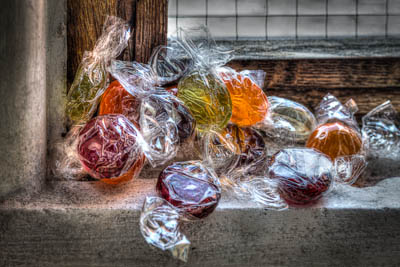|
Tag Archives: creative
Murphys Law…for photography.

22. You never really need a tripod when you’re actually carrying one. (by Marshmallow)
Remembering Magnum Photographer Inge Morath
Remembering Magnum Photographer Inge Morath
 |
Inge Morath Self Portrait, Jerusalem, 1958
Born 91 years ago today, on 27 May 1923, Ingeborg Morath was a photographer associated with Magnum Photos for nearly fifty years.
(Viking, 1969).
5 Tips to Seriously Improve Your Food Photography Techniques
5 Tips to Seriously Improve Your Food Photography Techniques
Food photography is arguably one of the most challenging types of photography out there. Like painting, you start with a blank canvas and build. Layer upon layer, you construct the photo until you reach the perfect balance of reality and art.
Everything in the photo is a decision. Every piece is perfectly placed by the photographer.
Starting out is frustrating, I know. You’re the chef, stylist, and the photographer. Once you reach technical proficiency with the camera, what’s next? I have been, and in a lot of ways still am, in that position. So, how do you improve your food photography beyond the basics? You work on the story.
Whether it is an after-party from the perfect cocktail, or the homemade roasted chicken recipe on the farm, like all photography, you’re telling stories.
Some shoots are more complicated stories than others, and it may sound like a lot of work, but it’s really not. Here are five quick tips you can use to seriously improve your food photography and tell better stories.
#1 – CHOOSE YOUR ANGLE
There are really only a few camera angles in food photography that you see again and again, but you need to make the one you choose, a conscious decision. Where you place the camera will affect the type of story you’re trying to tell.
Think of the food beforehand. Its size, shape, height and what is unique about it. Then place the camera where you think best highlights these qualities. Some dishes look great when you shoot from right in front of the food, and others are best suited when the you are looking down from directly above the table. Take a look at the cupcakes below; their spiralled and delicate toppings really stand out when shot from in front, yet the viewer doesn’t even see the size or shape when photographed from above.

On the other hand, it’s difficult to see all the ingredients and beautiful shape of these salmon tacos when shot from the front, so the shot from above was definitely the way to tell this story.

#2 – SURROUND YOUR HERO
When shooting from the front of the food try to keep a great foreground and background to play with. Use these empty spaces to tell more of a story. Surround your main dish with ingredients and props that relate to the food. Ingredients, sauces, oils, and cooking utensils could indicate how the dish was made.
Tins, jars, herbs, glasses, fabrics and linens could speak about the origin of the dish or the season in which it is served. Placing a few of these in the foreground and background will definitely elevate your story and give it depth.

The props in this image of baklava bring more to the story. The viewer has a sense of place that describes the Arabic origins of this delicious sweet.
#3 – NATURAL IS BEST MODIFIED
Light is king, and acquiring a few tools to help you control it will bring your food photography up to the next level. Poor use of light will ruin your story and immediately turn off your audience. So making sure light doesn’t distract will help out your food photos big time.

Direct natural light can give really hard and defined shadows like beneath the lemon cake on the left. Where those shadows are softened in the image to the right, with a little help from a cheap diffusor.
Placing a diffusor between the window and your table is first on the list. When working with direct sunlight, a diffusor (or even a thin white bed sheet) will greatly improve the quality of light. Softening those hard, dark shadows and bright highlights caused by direct sun light.

Using white and black cards really gives you control over the shadow areas. A white card was used to brighten up that lemon frosting on the left, but if you prefer more contrast than grab a black card and you’ll get an image like the one on the right.
Next up are white and black cards. You can make these yourself using foam core boards, bought at any craft store. Size them to fit your needs, using white cards to bounce light into shadow areas, revealing important details, or black cards to make shadows stronger for more contrast.

Nothing really changes between these two images except for a black card that was used to stop light from hitting the background, making sure the cake was the brightest area of the photograph.
Here is a little secret, when working with natural light. I call it, blocking (sometimes also called “gobos”). Sometimes that pesky natural light will fall on your background or props, causing them to be as bright or even brighter than your subject.
Since the viewer will always look at the brightest spot in your photo first, if it’s not your subject, it can harm your story. You can use your black cards to block light from hitting areas that will compete with your subject. This is also a very important technique for creating darker, low-key styled images.

Here is the final image, with a diffusor softening the window light, a white card to fill in the shadow on the lemon frosting and a black card to block the light on the background.
#4 – OUR OLD FRIENDS LINES AND LAYERS
With all these props and ingredients in the frame, how will we ever get the audience to look at our subject? Well, bring on the trusty techniques of composing with lines and layers. You can use props or ingredients to create lines and layered effects in your images. This is a compositional technique used by photographers to lead their audience’s eyes to the main subject.
You can use various props to create lines. Like this spoon, which forms a nice line, directing the viewer straight to the bowl of baked peaches and ice cream.

Since shooting from above always gets you more graphic images, there are plenty of chances to create some great lines here as well. Some could be quite literal like this cutlery leading to the round of Brie – or more abstract, like how the knife and pomegranate seeds create lines, framing our subject.

Composing images with layers is always a winner. This Brie, shot from the front, is set in the middle of various props and two large out of focus areas. This creates a layered effect, sending your eyes straight to the star.

#5 – HOLD THE COLOUR
This is my personal favorite. I love hunting for props, backgrounds and tableware to put in my images. This little tip was also the first big mistake I was making when I was starting out. It’s great to have props that are colorful, but if you’re not careful that colorful prop can easily upstage your food, and grab all the attention.
When placing items into your food images, try selecting neutral tones, something that makes the food really pop against it. Selecting a neutral background like this black metal tray and baking paper, amplifies the bright red strawberries and rhubarb inside these Crostatas, making them really steal the show.

2014 “Abandoned” Photo Contest
2014 “Abandoned” Photo Contest
 |
| Photo: Dylan Bauer |
Hasselblad and EIZO collaborate to equip imaging software with monitor self-calibrating capability
As part of a technical collaboration begun in 2013, Hasselblad has integrated the software development kit (SDK) for EIZO’s ColorEdge monitors into Phocus 2.8, the latest version of Hasselblad’s imaging software.
Phocus 2.8 activates the built-in calibration sensor housed inside select ColorEdge monitors. This allows photographers using Hasselblad cameras and ColorEdge monitors to view and edit photos as well as calibrate their monitors with just one piece of software and no external calibration device.
“We are delighted that Hasselblad is utilizing the self-calibration capability of our ColorEdge monitors and that together, we are able to give photographers a simplified workflow from shoot to digital display,” said Lucas Zastrow, Product Manager, Display Solutions. “Providing our own SDK assists manufacturers like Hasselblad to blend their software’s functionality seamlessly with our monitors, enabling our customers to work more easily and smarter.”
Ove Bengtson, Hasselblad Product Manager said: “At Hasselblad, we are constantly driven to further develop and fine tune not only our high-end camera systems but also our imaging software, Phocus, to provide professional photographers with the best possible tools for a well thought out, intuitive, fast and integrated workflow. The successful collaboration with EIZO enables Phocus users, with just a few clicks, to calibrate their ColorEdge monitor conveniently within the Phocus software itself, ensuring that the viewing experience lives up to the outstanding colour accuracy of Hasselblad RAW files.”
Photographers are invited to see this new feature in action on the Hasselblad booth (G-11) and the EIZO booth (G-10) at the CP+ Camera and Photo Imaging Show at Pacifico Yokohama, Japan, from February 13-16.
To find out more about Phocus and to download the software for free, please visit:www.hasselblad.com/products/phocus
About Hasselblad
Founded in 1941 in Gothenburg, Sweden, Hasselblad has been the leading manufacturer and partner for photographers working in the medium format environment for over half a century, consistently providing the highest level of quality and innovation. The extraordinary quality of the company’s products became famous in 1962 when Hasselblad cameras were selected for NASA space missions. Positive associations with Hasselblad’s past serve as the foundation for the company’s modern and energised brand.
In 2012, Hasselblad launched the Lunar – a state-of-the-art mirrorless interchangeable lens camera and a hybrid of Italian design and Swedish pedigree. Followed by the unveiling of the Hasselblad Stellar and the Hasselblad HV, this ushered the beginning of the company’s move to offer all fans of the iconic Hasselblad brand the chance to own one of their cameras.
The H Camera System with its professional lens family and unique advancements is the most comprehensive digital camera system of its kind available today. Hasselblad recently launched the first fully integrated medium format camera system incorporating the latest in CMOS sensor technology – the H5D-50c. The camera will be shown for the first time at the CP+ Camera and Photo Imaging Show in Japan.
About EIZO
Founded in 1968, EIZO Corporation is a leading global manufacturer of high-end visual display products. The image quality, long-term reliability, and innovative features of EIZO monitors make them the products of choice in many financial trading rooms, back offices, hospitals, air traffic control centers, and design studios throughout the world. EIZO is based in Japan and listed on the first section of the Tokyo Stock Exchange. It is represented in over sixty countries by a network of group companies and exclusive distributors.
Get Paid More For Your Photography With Value Shifting
Get Paid More For Your Photography With Value Shifting
Do you have a hard time differentiating yourself from the price anchors of other mediocre photographers? Have you considered taking the Starbucks approach to your products? In this two part series by Spencer Lum, of the Ground Glass Blog, he takes you through the psychology and sales techniques to increase your sales. Check out part two below.
Price Anchors
Often times the biggest reason a photographer lost a job is because another photographer offered a much lower price. These are called price anchors and are a huge obstacle to overcome when booking a job. People will undoubtedly shop around for photography to get the best deal as we do in most situations. Inexperienced clients will treat photography as if it is a common commodity found at the local market. In these situations price seems to become the common denominator that wins bookings with clients and a leading reason why many photographers devalue their work. It it critical for you to have clear and concise reasons why you value your work at a higher price than Joe Schmo Photography down the street.
Probing
“Probing” is a term I always remember when selling anything. Open ended questions early in the conversation will give you ammo for later in the pitch. Probing questions like “have you ever hired a photographer before” and “do you have a clear idea of what you are looking for” and “have you shopped around for other photographers and if so what did you like or dislike about them?” These are all great questions to ask that get the client talking about what it is they are looking for and allow you to unearth any concerns they may have early in the conversation. If you don’t unearth these concerns, it’s likely they might not share them. When this happens, its likely they won’t make a decision on the spot and will keep shopping elsewhere.
Remember that if you are doing most of the talking in your sales pitch then you are most likely doing it wrong, no matter how great it is. Probe probe probe early in the conversation and then listen and encourage them to keep talking. You must then quickly address the concerns with a practical solution that meets their needs. This will alleviate any stress they have if you can offer solutions that address these concerns.
Increase Your Sales
In my experience, and explained very well in these videos by Spencer, it is critical to 1.) Educate your clients on the differences of what your products offer through value shifting, and 2.) Be upfront about the pricing from the beginning to get into the follow up questions more quickly to unearth any concerns. It’s important to address these concerns in order to offer alternative solutions that will meet their needs.
Remember that consumers are willing to pay a higher price for a superior product if you can differentiate your products and services with shifting the conversation to the value of your services and not just the price compared to other photographers. Changing the conversation from price to the value they are getting from having you shoot the wedding will help book clients who are on the fence. The value however, is up to you on what makes your products have more value than Joe Schmo down the road. Focus on value added services and not just awesome photos.
Also remember the example Spencer gives us about Starbucks and apply that mentality to the services that you offer that will differentiate yourself from the competition and elevate your brand to a luxury experience.
Photography, Surfing and PTSD
Hi Guys,
I had the pleasure of spending the week with Surf Action in beautiful Cornwall.

Surf Action are an amazing charity that provides support for veterans and their families that are suffering from the devastating effects of an invisible illness called Post Traumatic Stress Disorder. It is a disorder that can not only effect veterans but also civilians that have gone through a severe trauma and with the help of Surf Action these incredible people are given the support and care they need to find peace of mind and the tools they need to help them and their families.
Whilst I was there the guys took me surfing and of course being a photographer it only seemed natural to capture some of the guys on their boards. Although the swell was not as big as they would have liked they still managed to catch some waves and have copious amounts of fun even though Rich Emerson founder of Surf Action kept hijacking other peoples boards whilst surfing.

But it never worked out well as you see from the following image ..

However with the lads enjoying the surf it gave a great opportunity to have a go at surf photography and to find out how my Canon 6D with 70-200mm f/4 lens would perform and am pleased to say they performed admirably as you can see from some of the images below.




Surf photography is not easy due to the fact the reflective light constantly changes and given that your metering is only good for the first few shots of a burst rate. Also it is better if you have an understanding of surfing and how the breaks work to best position yourself. A bigger lens would be better and it is not unusual to see a 600mm on monopod along the Cornish coast.
If you decide you want to do surf photography I advise you to study the works of other photographers within this field in particular photographers who have been and are a part of the surf scene such as Surf Actions Russ Pierre who has mastered his craft of surf photography by being a seasoned surfer and photographer so check out his stuff here.
I will be posting a more thorough How To on surf photography soon covering all the equipment and a typical set up so stay reading.
On a final note I would just like to say please support this amazing charity as they really do care about giving help to PTSD sufferers and their help is absolutely life changing.
Thanks Guys.
Glyn

Getting creative with grapes…
Food images by Glyn Ridgers
Some stunning creative food images by Glyn Ridgers

Sweets by Glyn Ridgers



